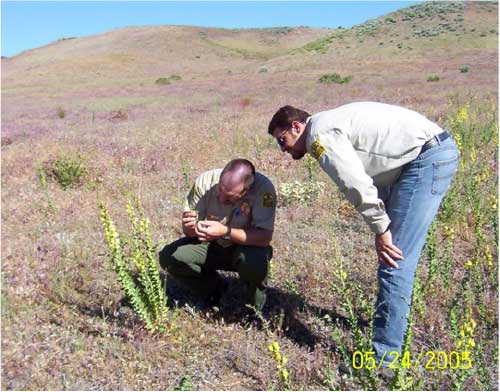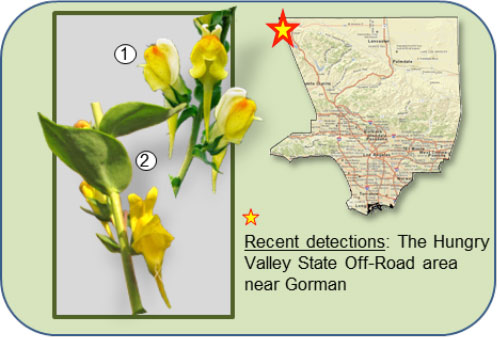Dalmatian Toadflax
Dalmatian toadflax (Linaria dalmatica) is a…Dalmatian Toadflax, Linaria dalmatica is a short lived perennial that is native to the Mediterranean region. It can readily be established in disturbed areas, along roadsides, pastures and mountain meadows.
In California, Dalmatian Toadflax blooms from April through August and flowers produce very tiny seeds that are easily carried by the wind. A mature plant can produce upwards of 500,000 seeds which can last up to two years in the seedpods of dead plants. The plant also reproduces by lateral roots and by prostrate vegetative stems. Plants range from one to four feet in height. It was introduced into the United States in the 1800’s. There are scattered infestations in California, the one in Los Angeles County being at the Hungry Valley State Recreational Vehicle Park near Gorman.
Dalmatian Toadflax forms dense colonies that displace native plants in natural areas. In the Pacific Northwest, thousands of acres of rangeland is heavily infested and because livestock avoid grazing toadflax, the carrying capacity of the area is much reduced. Dalmatian Toadflax contains quinazoline alkaloids that could possibly pose toxicity problems if ingested in sufficient quantities by livestock or wildlife; however intoxications of livestock have not been reported.
In May of 2008, a biological control project was implemented by the California Department of Food and Agriculture’s Integrated Pest Control Branch at the Hungry Valley site to augment the chemical control program that has taken place at the facility for many years. 1400 stem boring weevils (Mecinus janthinus) weevils were released at the site, two weeks apart at three different locations each time.
Feature photo: Clint Shock




